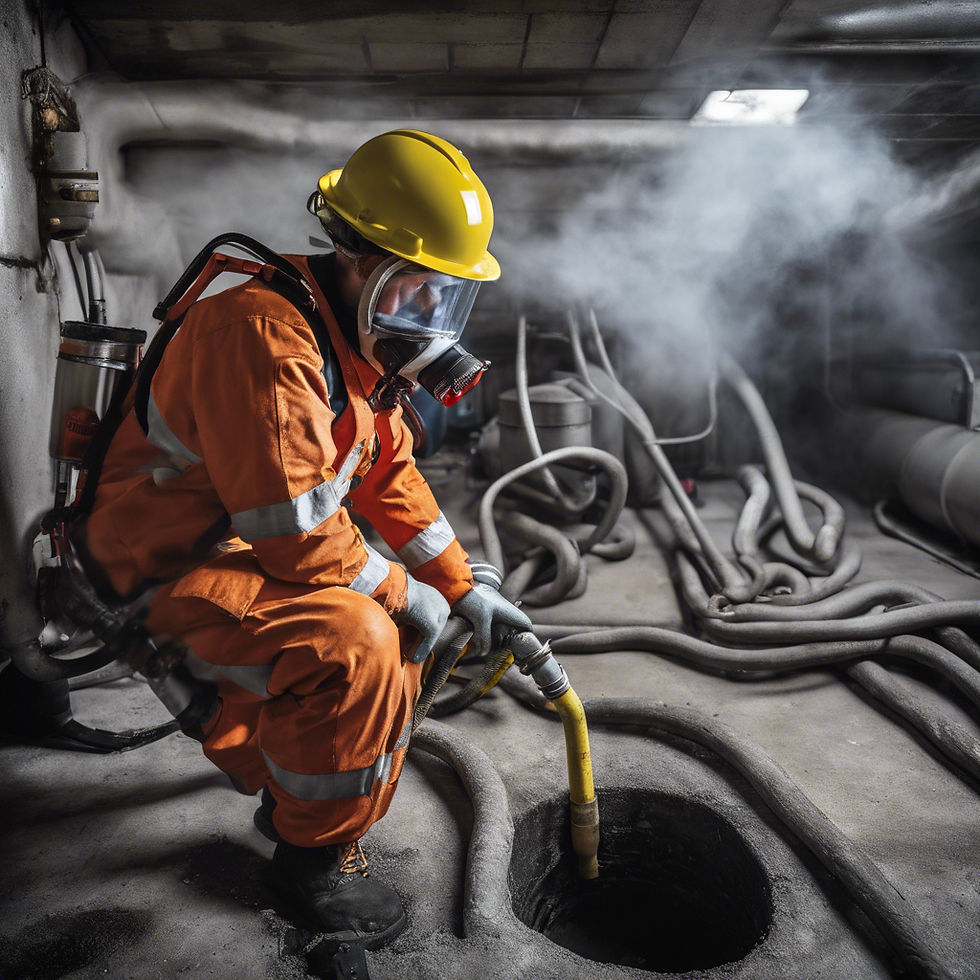Know your gases, they are the threat!
- CCTA

- Jul 23, 2024
- 2 min read
In the world of construction, the focus often lies on building impressive structures, meeting deadlines, and managing costs and logistics. However, beneath this surface lies a critical concern that cannot be overlooked: the safety of the workers. One of the most insidious threats of enclosed space work on a construction site comes from hazardous gases, which, if not properly managed, can lead to severe health issues, accidents, or even fatalities.

Understanding the Threat
Workers in the construction industry are exposed to a variety of hazardous gases, including:
Carbon Monoxide (CO): A colorless, odorless gas that inhibits the blood’s ability to carry oxygen to vital organs – causing headache, dizziness and even unconsciousness and death.
Chlorine Dioxide (ClO2): Used in water purification, as a gas it is highly reactive and can cause respiratory distress.
Methane (CH4): Highly flammable and can lead to explosions poorly ventilated spaces.
Oxygen (O2): While necessary for life, in high concentrations it can increase the risk of fire, and in low concentrations breathing difficulties and asphyxiation.
Hydrogen Sulphide (H2S): Known for its rotten egg smell, it is highly toxic and can cause rapid unconsciousness and even death at high concentrations.
Volatile Organic Compounds (VOCs): Emitted from various construction materials, these can lead to long-term health problems.
Staying Safe
To ensure the safety of workers in environments where these gases are present, several precautions and safety measures must be adopted:
Regular Monitoring and Detection: Continuous monitoring of the air quality in confined spaces on construction sites is essential. Portable gas detectors do this job. These devices sound alarms when dangerous levels of gases are detected, allowing for immediate evacuation.
Ventilation: Proper ventilation is crucial in dispersing toxic or flammable gasses as well as preventing their accumulation. Natural ventilation, such as open windows and vents, may not be enough, so mechanical ventilation systems like exhaust fans and air purifiers are often required.
Personal Protective Equipment (PPE): Personal protective equipment, including gas masks and respirators, should be provided and worn by all workers where the environment may be hazardous.
Training: Educating workers about the dangers of hazardous gases is vital. Regular training sessions should be conducted to keep workers informed about the latest safety protocols and emergency procedures. Get in contact with our team for your Health and Safety training needs.
Emergency Preparedness: Despite all preventive measures, emergencies can still occur. Having a robust emergency response plan can save lives. Workers should be trained to respond quickly and efficiently to alarms and other indicators of gas leaks or exposure and specialist staff trained in emergency rescue response.
Remember, the foundation of any great construction project isn’t just in the materials used, but in the well-being and safety of the workers who build it. Prioritise safety today to ensure a healthier and more productive tomorrow.
Kia kaha





Comments